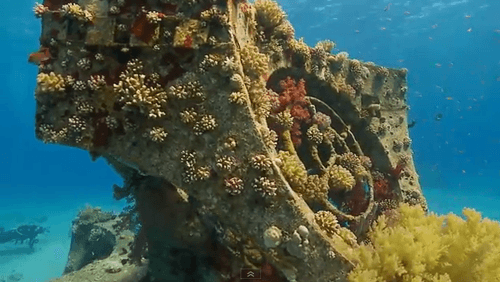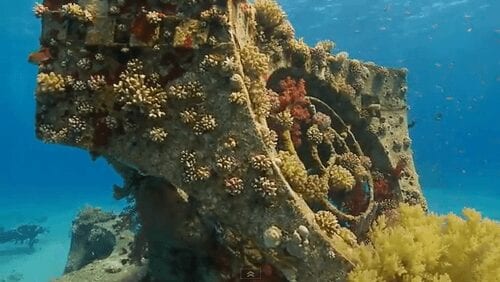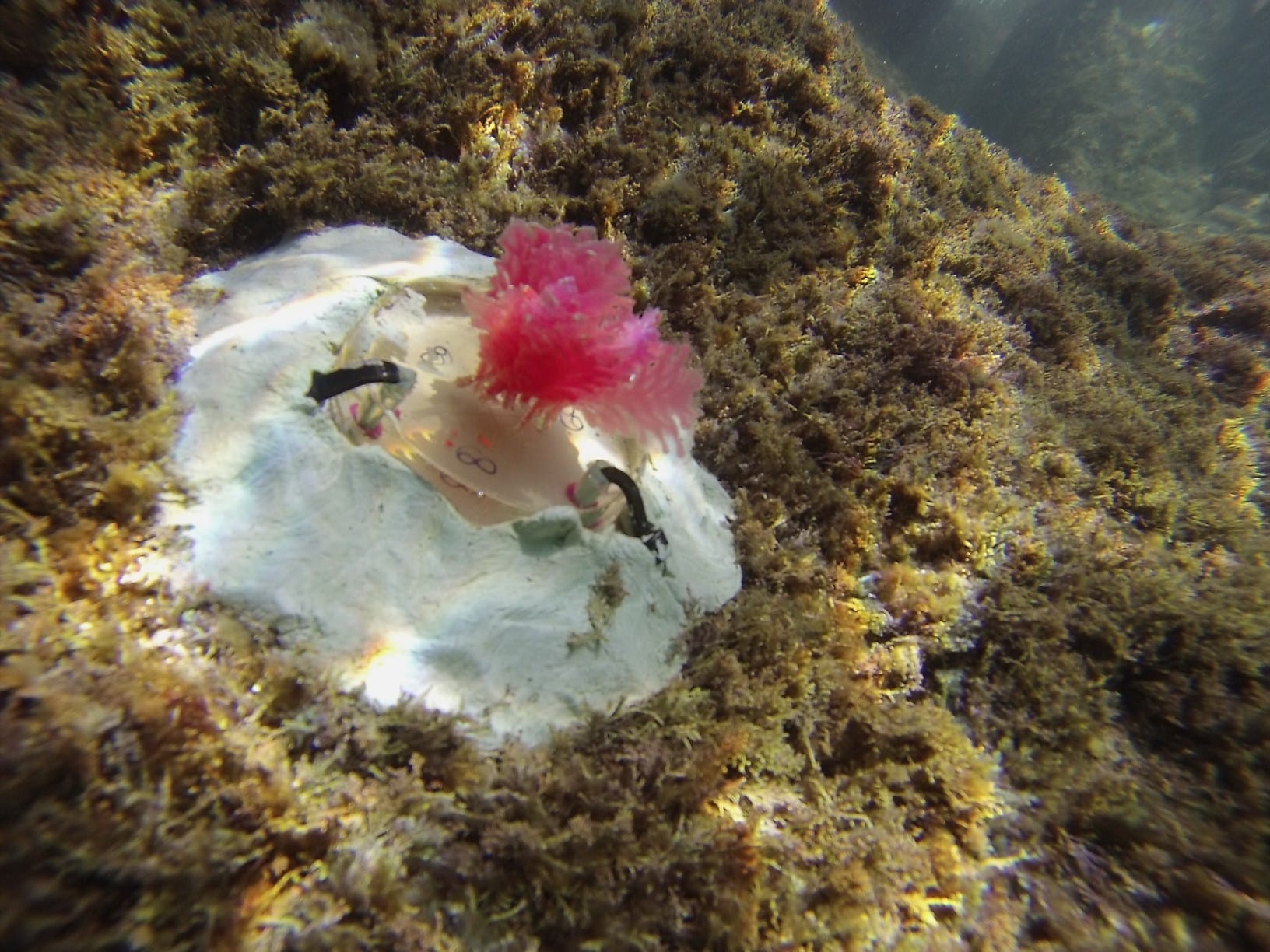
The “Tamar Reef” shows that divers assign economic importance to aspects of reef biodiversity
In 2007, an artificial reef designed by Ben-Gurion University of the Negev (BGU) researchers was placed in the Gulf of Eilat to reduce environmental pressure on the region’s natural reef.
Now teeming with life, a new study using the “Tamar Reef” shows that divers assign economic importance to aspects of reef biodiversity. These findings could help underwater conservation efforts.
According to the study published in the ICES Journal of Marine Science, divers were willing to pay to improve the reef’s attributes and were able to differentiate and rank their preferences of biodiversity, numbers of fish and corals, coral species richness, fish species richness, coral size, coral abundance, and fish abundance.
Respondents ranked biodiversity as the most desirable value, while fish abundance was the least important.
“This result was exiting to us, since it shows that the general public as well as scientists place a high value on biodiversity and that visitors understand the fundamentals that constitute a coral reef community,” says Dr. Nadav Shashar of BGU’s Marine Biology and Biotechnology Program in Eilat, Israel.
“This may help direct conservation efforts undertaken in designing future marine reserves and pre-planned artificial reefs.”
Dr. Shashar and his team surveyed 295 divers to evaluate their willingness to pay for improving various elements of a coral reef. They were shown a series of photographs of the BGU-created Tamar Reef with varied densities and compositions of fish and coral species.
The researchers focused on the overall aesthetic value of each component, but also how divers’ aesthetic preferences compare with scientific biodiversity attributes that might be of interest for conservation purposes.
The artificial reef project is a collaboration between Israelis and Jordanians to restore the local Gulf reef culture. The Tamar Reef was the first of four reefs installed in the Red Sea. Students and faculty from both countries work together in studying the artificial reef and how it affects the marine ecology in the area.
The Latest Bing News on:
Artificial Reef
- Great White Shark spotted off Alabama’s coaston May 8, 2024 at 11:03 am
A new Great White Shark has been spotted off the coast of Alabama. Researchers from the University of South Alabama captured video of a juvenile shark, known as Miss Pawla. Miss Pawla is about 8 feet ...
- A Great White shark has been spotted off Alabama’s coast for the first timeon May 8, 2024 at 10:36 am
Miss Pawla, an 8-foot juvenile Great White shark, is about 15 years old. Great Whites don’t reach maturity until they are about 30.
- Great White Shark spotted off Alabama Coast — USA researchers’ ‘first documented sighting’ (Photos, Video)on May 8, 2024 at 10:35 am
In the University of South Alabama’s “first documented sighting” off the coast of Alabama, researchers have found Miss Pawla, a juvenile great white shark. Researchers from the University of South ...
- Researchers capture video of great white shark off Alabama coaston May 8, 2024 at 9:54 am
Video of the 8-foot juvenile shark called Miss Pawla was captured by researchers from the University of South Alabama who were monitoring fish movement near the Alabama’s artificial reef zone.
- Great White Shark spotted off Alabama Coast — ‘first documented sighting’ (Photos, Video)on May 8, 2024 at 8:25 am
In the “first documented sighting” off the coast of Alabama, researchers have found Miss Pawla, a juvenile great white shark. Researchers from the University of ...
- Avocet: A Wreck Dive With Never-Ending Surpriseson May 7, 2024 at 10:55 pm
Drop in on this artificial reef off Pensacola, Florida, and prepare to be overwhelmed by schooling pelagic fish.
- Hitler’s yacht sits off the coast of this Florida beach. Here’s whyon May 7, 2024 at 10:53 pm
Recommended Videos Map showing the location where the Ostwind was sunk off the coast of Miami Beach. (Photo Credit: FWC Artificial Reef Deployment Locator) (Florida Fish and Wildlife Conservation ...
- Katrina Law addresses her NCIS finale cliffhangeron May 7, 2024 at 12:36 pm
The NCIS season finale ended on a big cliffhanger for Agent Jessica Knight (played by Katrina Law). Much of the episode teased a terrible fate for Knight and Agent Alden Parker (Gary Cole). The duo ...
- NCIS Season 21 Episode 10 Review: Reef Madnesson May 6, 2024 at 7:00 pm
Our review of NCIS Season 21 Episode 10 reveals there may well be a shakeup in the team's lineup once again as Jessica Knight gets an offer that she can't refuse.
- How artificial reefs can help Southwest Floridaon April 26, 2024 at 4:43 pm
On any given day along the Southwest Florida coast, people will see boaters, beaches and much more. But what they can't see just off the shore are the dozens of artificial reefs – underwater – some ...
The Latest Google Headlines on:
Artificial Reef
[google_news title=”” keyword=”Artificial Reef” num_posts=”10″ blurb_length=”0″ show_thumb=”left”]
The Latest Bing News on:
Reef biodiversity
- How a filmmaker, a pile of old shells and a bunch of amateurs are bringing our oyster reefs backon May 7, 2024 at 10:13 am
A clever approach to restoring Australia’s native oyster and mussel reefs in Queensland’s Moreton Bay is catching on, giving community groups a way to get involved in their local patch.
- Stony Coral Disease Is Reshaping Caribbean Reefson May 7, 2024 at 2:04 am
The outbreak of a deadly disease called stony coral tissue loss disease is destroying susceptible species of coral in the Caribbean, reshaping the reef landscape.
- Coral disease is pushing Caribbean reefs toward extinctionon May 5, 2024 at 10:00 am
The health of Caribbean reefs is under threat from a virulent disease known as Stony Coral Tissue Loss Disease (SCTLD) ...
- The benefits of crown-of-thorns starfish control on the Great Barrier Reefon May 4, 2024 at 7:20 am
New research has revealed that years of targeted crown-of-thorns starfish control on the Great Barrier Reef has protected coral and supported reef health and resilience.
- There's a soundtrack to our coral reefs and scientists are hopeful it can encourage coral regrowthon May 3, 2024 at 4:00 pm
Australian scientists are trying to boost coral regrowth. Experiments broadcasting sounds from healthy coral reefs are helping them.
- Stony coral tissue loss disease is shifting the ecological balance of Caribbean reefson May 3, 2024 at 3:27 pm
A new study shows stony coral tissue loss disease is causing drastic changes in the Caribbean's population of corals, which is sure to disrupt the delicate balance of the ecosystem and threaten marine ...
- Stony coral tissue loss disease is shifting the ecological balance of Caribbean reefson May 3, 2024 at 11:05 am
“Coral reefs are biodiversity hotspots that serve as vital habitats for countless marine species, providing food, shelter, and breeding grounds,” Altieri said. “They are natural protectors ...
- Climate skeptic dismisses severity of Great Barrier Reef bleachingon April 26, 2024 at 9:39 am
Scientists predict recent bleaching at Australia's Great Barrier Reef will be the worst on record, but skeptics online dismiss the damage by claiming coral populations are at a record high. This is ...
- Ocean Heat Pummels the Great Barrier Reef, Againon April 25, 2024 at 10:58 pm
It’s never been so bad. The Great Barrier Reef, which is one of nature’s most iconic mosaics of biodiversity, is on the ropes because of extreme global ...
- BFAR: Rozul Reef corals damaged, but marine biodiversity still in 'good condition'on April 25, 2024 at 3:57 am
The marine biodiversity at Rozul Reef in the West Philippine Sea remains in good condition despite the corals there being evidently harvested and damaged, the Bureau of Fisheries and Aquatic Resources ...
The Latest Google Headlines on:
Reef biodiversity
[google_news title=”” keyword=”reef biodiversity” num_posts=”10″ blurb_length=”0″ show_thumb=”left”]











